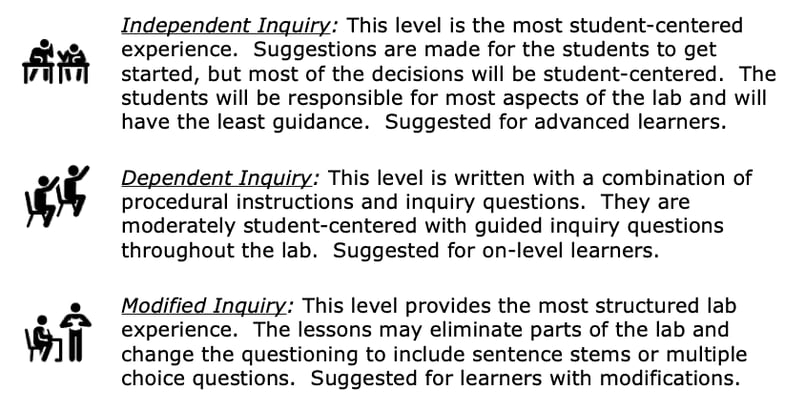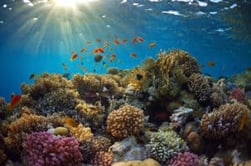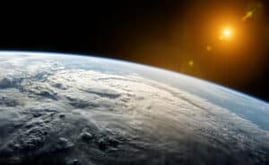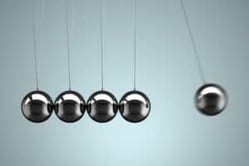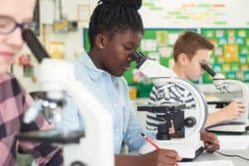Plate Tectonic Crustal Features Inquiry Lab
Middle School Inquiry Lab on Plate Tectonic Crustal Features
In this lab students will use Google Earth to investigate a variety of crustal features formed at the different plate boundaries.
Each inquiry lab will contain an essential question that will drive the lesson and make students think. For this lesson, the essential question is:
- How does the movement of tectonic plates result in the formation of crustal features?
BACKGROUND INFORMATION AND MATERIALS LIST:
Students will begin the lab by reading the essential question and background information. This can be done individually, as lab groups, or as a whole class. If you consider lab groups, you also might include some type of whole class formative checks before digging into the lab.

Materials List:
- computer or tablet compatible with Google Earth
- colored pencils
- scissors
- sticky adhesive wall putty or double-sided tape
- 5″ or larger diameter ball
- tectonic plates map page
PROCEDURE:
This inquiry lab will give students a chance to use technology, on either a tablet or laptop, in order to investigate the formation of three specific formations caused by plate tectonics and certain plate boundaries. Using Google Earth’s interactive features, students will track, map, and explain how specific plate movement caused certain crustal features to form.
As students transition from crustal feature to crustal feature, students are asked a few follow-up questions to get them to explain, in their own words, how the movement of the tectonic plates could have caused these crustal formations. As an extension, you can ask the students to predict what these features will look like in the future, as these formations are still being changed every year.
CHECK FOR UNDERSTANDING:
At this point in the lab, students will be checked for understanding by answering questions about their findings. Here are a few that come with the lab:
- What plate boundary do these formations represent?
- San Andreas Fault:
- Mid-Atlantic Ridge:
- Himalayas:
- What is being created at this boundary?
CONCLUSION
Students will go back to the essential question and write a CER (Claim, Evidence, Reasoning) to conclude the lab. Once completed, students will reflect back on their learning by answering the following questions:
- Describe the movement of the plates at a convergent boundary. What crustal features would form at a continental to continental boundary?
- Why do you think Earth does not get larger if new crust is being created during seafloor spreading?
MODIFIED AND INDEPENDENT INQUIRY VERSIONS
All of the Kesler Science inquiry labs come with three different modification levels. Each lab is differentiated using the icons below.
STANDARDS ALIGNMENT
TEKS: 8.9B – Relate plate tectonics to the formation of crustal features.

Download Over $100 in FREE Resources
For Middle School Science
Simply create a login below and gain immediate access to a selection of our Kesler Science product line worth $100 - for FREE. There's a full version of every product type! You'll also join tens of thousands of middle school science teachers who receive timely tips and strategies straight to their inbox.


